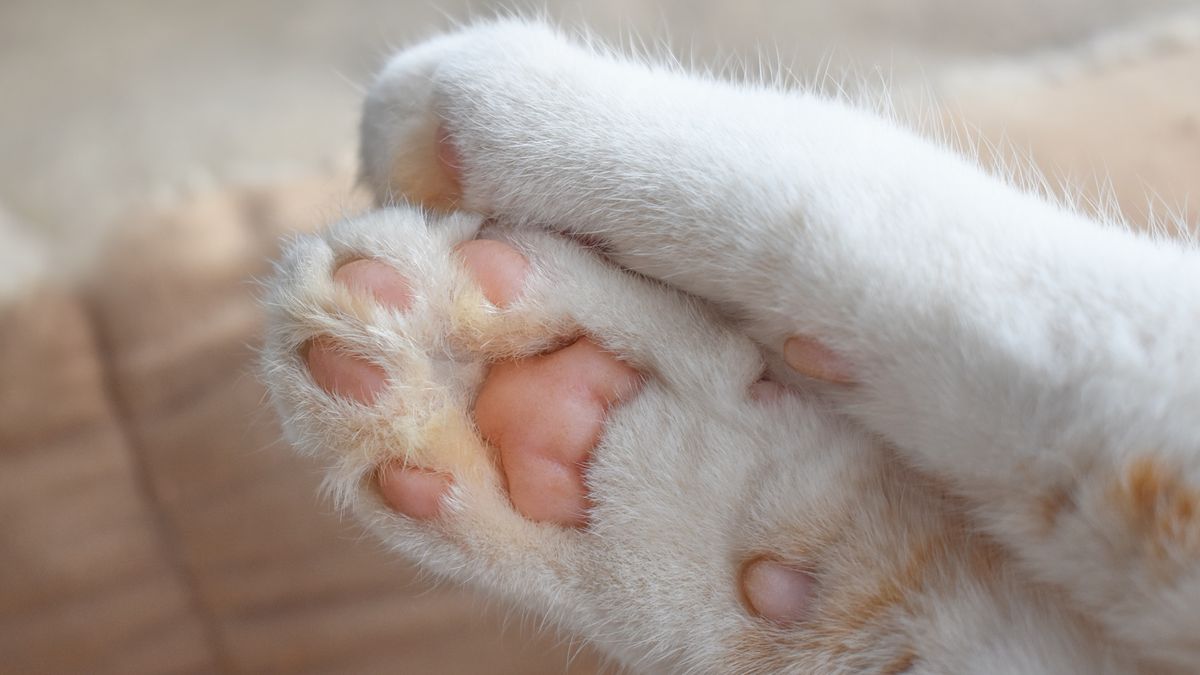
From their dainty noses to their fluffy tails, there is much to admire about cats. For many feline enthusiasts, one of the most charming aspects of their pets is the “toe beans”—the soft, rounded pads on a cat’s feet. Named for their resemblance to actual beans, these adorable pads have inspired countless cute cat videos and even dedicated online forums.
But what is the purpose of toe beans in cats? The answer lies in millions of years of evolutionary history.
According to Jonathan Losos, an evolutionary biologist at Washington University in St. Louis and the author of “The Cat’s Meow: How Cats Evolved from the Savanna to Your Sofa” (Viking, 2023), the pertinent question isn’t why cats have toe beans, but why all creatures in the Carnivora order—including dogs, wolves, bears, and more—have evolved with paw pads.
Losos explained that these paw pads likely emerged approximately 50 million years ago, as the Carnivora order took shape. “This is an ancient trait, and I believe these animals possess it mainly for the same reasons,” he added.
Toe beans play several critical roles for cats and their Carnivora relatives. Primarily, they assist with running, jumping, and landing gently. Most notably, Losos noted that these specialized pads act as shock absorbers, which allows cats to survive falls from significant heights without serious harm.
Related: How do cats land safely on their feet?
The interior of a cat’s toe beans comprises fat tissue wrapped in collagen, giving them their cushy, bouncy feel, which helps mitigate impact. Research into domestic cats’ paw pads has shown that they become stiffer under compression, enhancing their ability to cushion falls. Observations at the cellular level revealed that these pads contain elliptical pockets of fat that help absorb energy and reduce wobbliness during landings.
Interestingly, the remarkable shock-absorbing qualities of cat toe beans have caught the attention of researchers looking to develop advanced footwear for paratroopers. By replicating the fat-filled structure of these paw pads, scientists have created 3D-printed shoe soles that better absorb the shock of high-altitude landings.
Beyond providing a soft landing surface, toe beans also contribute to agility by enhancing traction. Without paw pads, cats and other Carnivora members would struggle to maintain grip on slippery surfaces. Moreover, similar to human fingertips, paw pads are incredibly sensitive. Amy Shojai, an authority on animal behavior and pet care, shared with Live Science that cats can sense minor temperature changes through their toe beans, which are also finely tuned to detect various textures.
Interestingly, toe beans are among the few body parts of cats equipped with sweat glands, a feature shared by most Carnivora. “You might see damp paw prints when your cat feels stressed,” Shojai explained. While these pads can assist in regulating body temperature, cats primarily rely on licking themselves to cool off.
Shojai also noted that the variety of toe bean colors directly corresponds to each cat’s fur hue and is influenced by the level of melanin present. Generally, cats with darker fur have black or brown toe beans, while those with lighter coats tend to have pink pads. Multicolored cats usually feature accordingly varied toe beans.
Pet owners should monitor their cats’ toe beans closely, as any unusual changes—such as discoloration, swelling, or dryness—can indicate health issues and may warrant a vet’s examination.
In conclusion, the science behind toe beans demonstrates an incredible feat of evolution, refined over millennia to enhance a cat’s survival and hunting skills. And don’t forget—their undeniable cuteness only adds to their charm!” Losos remarked.









